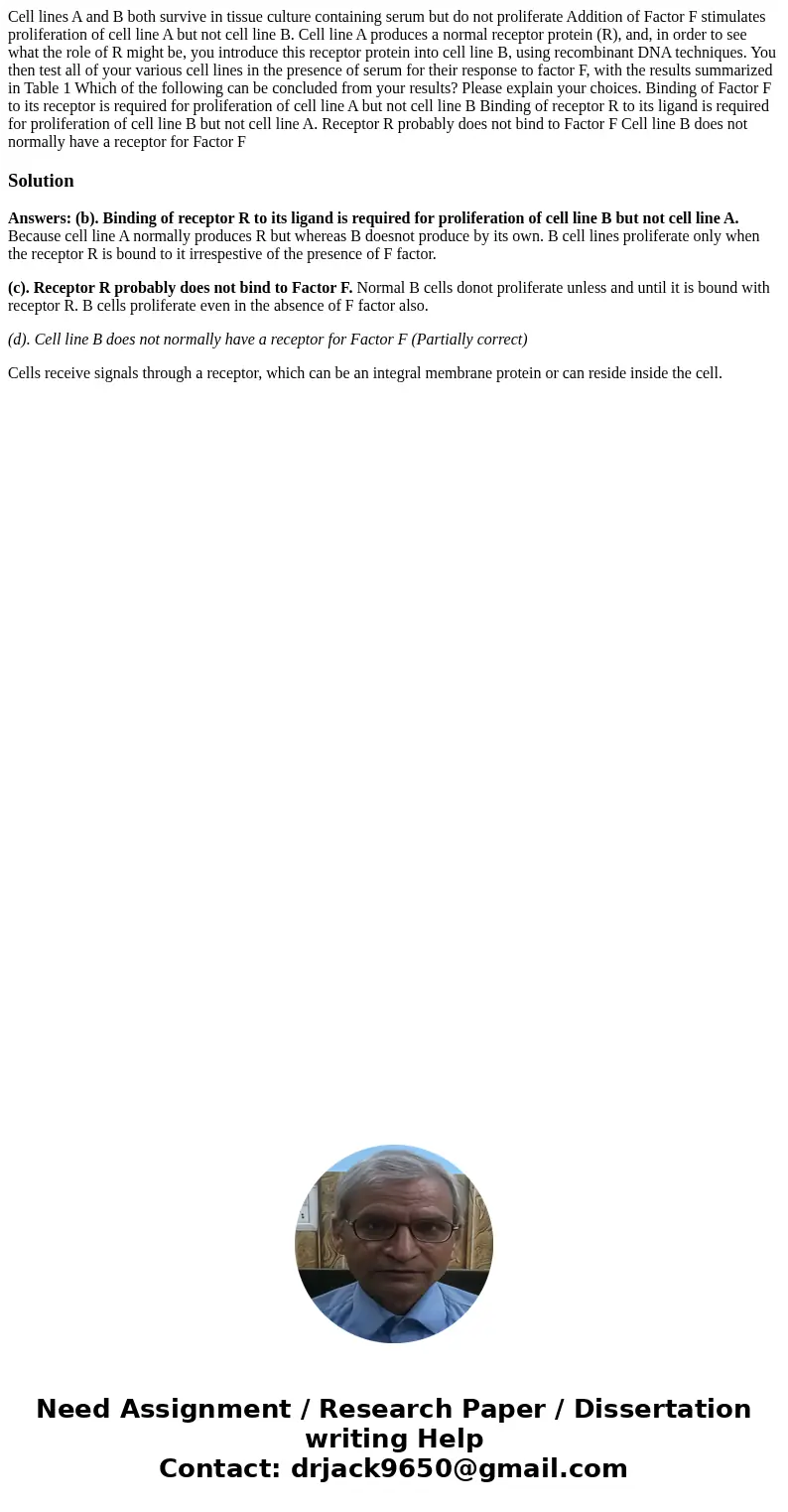Cell lines A and B both survive in tissue culture containing
Cell lines A and B both survive in tissue culture containing serum but do not proliferate Addition of Factor F stimulates proliferation of cell line A but not cell line B. Cell line A produces a normal receptor protein (R), and, in order to see what the role of R might be, you introduce this receptor protein into cell line B, using recombinant DNA techniques. You then test all of your various cell lines in the presence of serum for their response to factor F, with the results summarized in Table 1 Which of the following can be concluded from your results? Please explain your choices. Binding of Factor F to its receptor is required for proliferation of cell line A but not cell line B Binding of receptor R to its ligand is required for proliferation of cell line B but not cell line A. Receptor R probably does not bind to Factor F Cell line B does not normally have a receptor for Factor F 
Solution
Answers: (b). Binding of receptor R to its ligand is required for proliferation of cell line B but not cell line A. Because cell line A normally produces R but whereas B doesnot produce by its own. B cell lines proliferate only when the receptor R is bound to it irrespestive of the presence of F factor.
(c). Receptor R probably does not bind to Factor F. Normal B cells donot proliferate unless and until it is bound with receptor R. B cells proliferate even in the absence of F factor also.
(d). Cell line B does not normally have a receptor for Factor F (Partially correct)
Cells receive signals through a receptor, which can be an integral membrane protein or can reside inside the cell.

 Homework Sourse
Homework Sourse